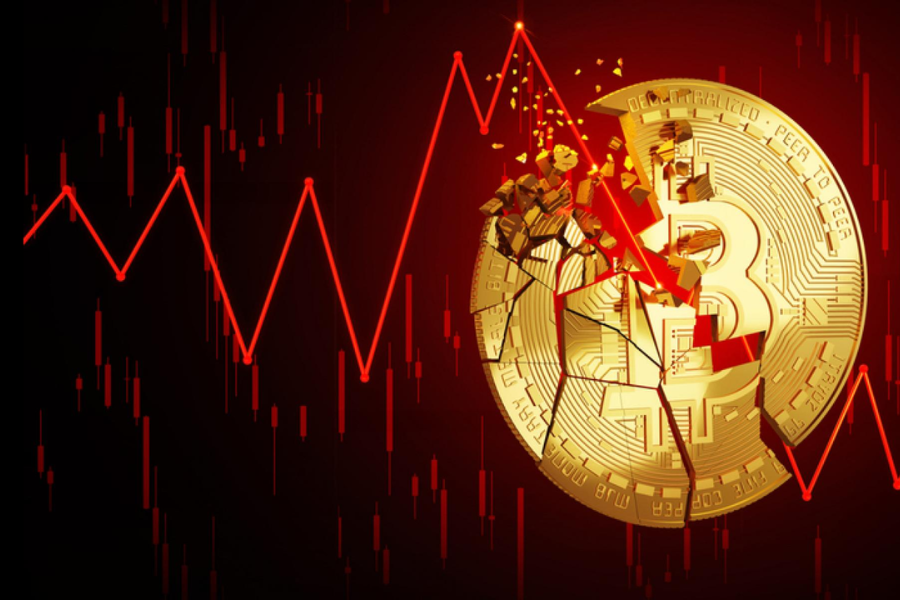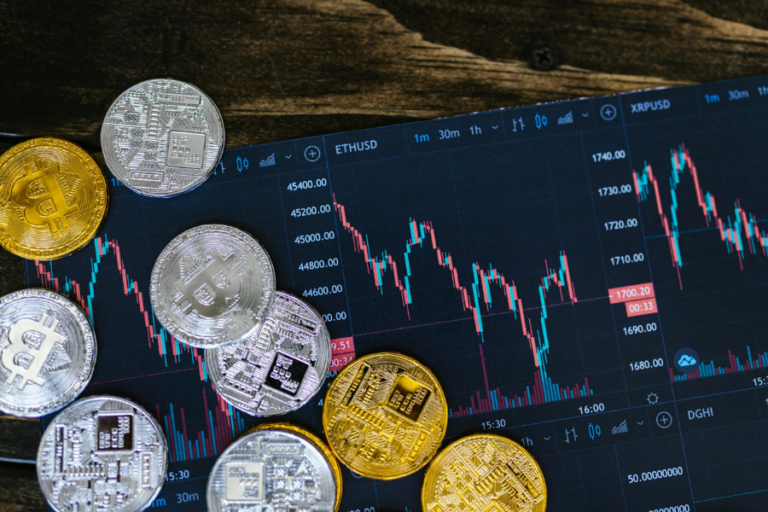Crypto Crash: Understanding the Causes, Impact & Future Outlook
The cryptocurrency market has been through several turbulent phases over the years, with sharp rises in value followed by equally dramatic crashes. These fluctuations, though often seen as a characteristic of the crypto space, continue to raise questions about the market’s stability, its potential for long-term growth, and the impact it has on investors, businesses, and the broader financial ecosystem. As we move into 2025, concerns about another potential crypto crash are becoming more pressing. In this article, we will explore the causes behind previous crypto crashes, analyze their impact on the market, and offer insights into what might happen in the future.
1. What Causes a Crypto Crash?
Understanding the causes of a crypto crash is essential to predicting how the market might behave in the future. While there is no single factor that can be attributed to every market collapse, there are several common elements that contribute to crashes in the crypto space. These include market manipulation, investor sentiment, technological issues, regulatory crackdowns, and macroeconomic factors.
Market Manipulation and Speculation
Cryptocurrencies, unlike traditional financial assets, are still relatively young and can be highly susceptible to manipulation. Whale traders—those who hold large quantities of a particular cryptocurrency—can influence the market by making large buy or sell orders, artificially inflating or deflating the price. This creates volatility, leading to sharp swings that can cause panic and trigger mass sell-offs, thus contributing to a crash.
Additionally, speculation plays a significant role in crypto price movements. Many investors buy cryptocurrencies not based on their intrinsic value or utility but due to speculative trends or the fear of missing out (FOMO). This speculative nature of the market can cause asset bubbles, where the price of an asset inflates far beyond its actual worth. When the bubble bursts, the prices crash, leading to significant losses for investors.
Investor Sentiment and Panic Selling
Crypto markets are heavily influenced by investor sentiment, and negative news can send prices into a free fall. Whether it’s rumors, high-profile hacks, or regulatory actions, negative sentiment can lead to widespread panic selling, exacerbating the crash. Investors who are fearful of losing their investments may rush to sell, only to find that the market has already crashed, resulting in further price declines.
In many instances, crashes are not caused by a single piece of bad news but rather a culmination of negative events. For example, news of a major exchange hack, followed by a tweet from a prominent figure in the crypto space, could result in panic across the market. These events can create a snowball effect, where more and more investors sell, causing a downward spiral.
Technological Failures and Security Breaches
Another cause of a crypto crash is technological failure or security breaches. Cryptocurrency exchanges and wallets are prime targets for hackers, and high-profile hacks can shake investor confidence, causing market turmoil. When large sums of money are stolen or lost, the crypto market can experience a sharp sell-off as investors fear that their assets may be unsafe.
Moreover, technological issues such as network congestion, scalability problems, or flaws in blockchain protocols can also lead to price drops. For example, during periods of high demand, if a blockchain network cannot process transactions quickly enough, it can result in delays, high fees, or a breakdown in trust. This can lead to an exodus of investors, triggering a market crash.
Regulatory Crackdowns
Regulatory uncertainty is another critical factor that contributes to crypto crashes. As governments and financial regulators around the world grapple with how to handle digital currencies, the fear of impending regulation can send investors fleeing. When a major country, like China, announces a ban on cryptocurrency trading or mining, it can have a massive effect on market prices.
Regulatory clarity is necessary for the growth of the crypto industry, but it’s also a double-edged sword. While clear regulations can foster innovation and attract institutional investment, regulatory crackdowns can have the opposite effect, stalling progress and driving away retail investors. In the past, when governments have expressed intentions to regulate or ban cryptocurrency, the market has experienced sharp declines in value.
Macroeconomic Factors
Broader macroeconomic conditions can also contribute to crypto market crashes. Factors like inflation, interest rates, stock market performance, and geopolitical events can have a direct or indirect impact on cryptocurrency prices. For example, when traditional markets experience volatility, investors often look to crypto as a hedge, pushing prices higher. However, in times of global economic downturns or a financial crisis, risk-averse behavior might lead to large sell-offs in both traditional and digital assets.
2. The Impact of a Crypto Crash
When a crypto crash occurs, the effects are felt across multiple areas of the market and the broader economy. Investors, both retail and institutional, are usually the most affected, as they often face significant losses in a short amount of time. For many, this can mean the loss of life savings or a substantial portion of their wealth.
Impact on Retail Investors
For retail investors—those who typically invest smaller amounts in cryptocurrencies—a crash can be devastating. These investors are often more vulnerable to market volatility and may not have the resources to weather a prolonged downturn. A crypto crash may result in emotional reactions, such as panic selling, leading to further price declines. In many cases, retail investors may become disillusioned with the market and may be hesitant to return, even when the market recovers.
Impact on Institutional Investors
Institutional investors, such as hedge funds, venture capital firms, and publicly traded companies, have a different set of concerns during a crypto crash. While they may have larger capital reserves and the ability to weather short-term losses, they are also under more scrutiny from regulators, clients, and shareholders. A sharp decline in the value of their crypto holdings may lead to reputational damage and could prompt them to reconsider their long-term investment strategies.
Furthermore, a crash may cause institutional investors to reconsider the risk profile of cryptocurrencies. If they perceive crypto as too volatile or risky, they may withdraw their investments or shift their focus to more traditional assets.
Impact on Crypto Companies and Exchanges
Crypto companies and exchanges can also be significantly affected by a crash. These platforms rely on the trading volume of cryptocurrencies for revenue, and when prices drop, trading activity often decreases. Additionally, if the market crash is accompanied by a security breach or technological failure, exchanges could face a loss of trust and even legal repercussions.
Many cryptocurrency startups and blockchain projects may also struggle to survive a market downturn. Funding rounds could dry up, partnerships may be put on hold, and product development could slow as a result of the financial uncertainty. In some cases, smaller or underfunded crypto projects may collapse entirely.
Impact on the Broader Economy
The broader economy can be impacted by a crypto crash, particularly if cryptocurrencies become more integrated into traditional financial systems. While digital currencies represent a small fraction of the global economy, their use in cross-border payments, remittances, and digital finance continues to grow. A widespread loss of value in crypto could erode consumer confidence and slow down the adoption of blockchain-based solutions.
However, many experts argue that the overall impact of a crypto crash on the global economy would be relatively limited, especially compared to more traditional financial crises. Given that the total market capitalization of cryptocurrencies is still far smaller than traditional assets like stocks or bonds, the broader economic fallout would likely be contained.
3. Will the Crypto Market Recover?
While it’s difficult to predict with certainty, history suggests that the crypto market has a tendency to bounce back after a crash. For example, after the 2017 crash, Bitcoin and other cryptocurrencies rebounded, reaching new all-time highs in subsequent years. This cyclical pattern of boom and bust has become somewhat expected in the crypto world.
Several factors could drive the recovery of the crypto market, including:
- Institutional Adoption: The increasing involvement of institutional investors in the crypto market could help stabilize prices over the long term. As more large players enter the space, they could bring more liquidity and stability, helping to prevent extreme fluctuations.
- Technological Advancements: Innovations such as Ethereum 2.0 and the development of scalable and interoperable blockchain solutions could improve the infrastructure of the crypto market, making it more robust and efficient.
- Regulatory Clarity: As governments around the world continue to develop clearer and more supportive regulatory frameworks, the market may become less susceptible to sudden shocks. Positive regulation could also increase institutional confidence, leading to higher investment and greater market stability.
- Growing Use Cases: As blockchain technology continues to evolve, the number of use cases for cryptocurrencies and decentralized applications (dApps) is likely to grow. The adoption of crypto for cross-border payments, DeFi, and NFTs could drive more mainstream adoption, helping to stabilize the market.
4. What Should Investors Do During a Crypto Crash?
If you find yourself invested in cryptocurrencies during a crash, it’s important to take a rational, long-term view. Here are some tips for navigating a crypto crash:
- Avoid Panic Selling: Crypto crashes can trigger fear and panic selling, but it’s crucial to resist the urge to sell your assets in haste. If you believe in the long-term potential of the assets you hold, holding through the downturn may be the best strategy.
- Diversify Your Portfolio: Having a diverse portfolio of assets can help protect against market volatility. Diversifying your investments across different cryptocurrencies and other asset classes (such as stocks, bonds, and commodities) can reduce your exposure to any one particular market.
- Do Your Research: Stay informed about the latest developments in the crypto space. Understanding market trends, technological advancements, and regulatory changes can help you make more informed decisions during a market crash.
- Invest Responsibly: Only invest what you can afford to lose. Cryptocurrencies are volatile and can experience large price swings, so it’s important to approach crypto investing with caution and to ensure that your overall financial strategy is well-balanced.
Conclusion
A crypto crash, while unsettling, is not necessarily the end of the road for the cryptocurrency market. It’s a part of the natural cycle of digital currencies, which have been known for their high volatility. However, understanding the causes and impacts of a crypto crash is key to navigating the market successfully.
Investors who maintain a long-term perspective, do their research, and remain patient through the ups and downs are likely to weather the storm and come out ahead when the market recovers. As the cryptocurrency space matures, we can expect more stability, clearer regulations, and greater adoption—factors that could ultimately help the market become more resilient to future crashes.
Discover the latest crypto trends and expert insights at Crypto30x.com.co.





